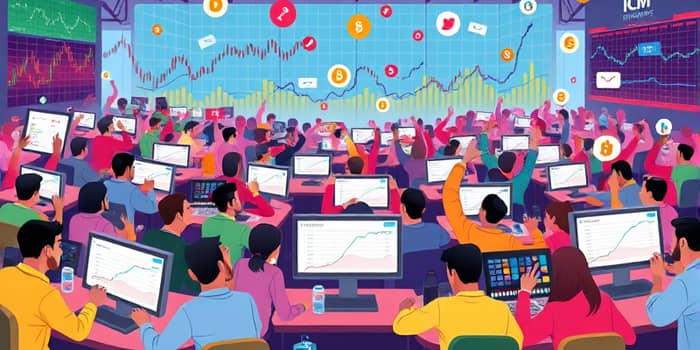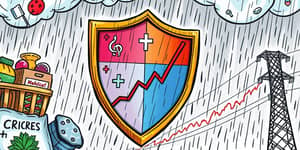
In recent years, retail investors have redefined markets, rallying behind so-called “meme stocks” and triggering historic price swings. Far removed from traditional fundamentals, these stocks soar and crash on the strength of online narratives, collective enthusiasm, and the power of social media. This article unpacks the mechanics behind these phenomena, explores their cultural roots, and offers practical advice for navigating the unpredictable world of meme-driven rallies.
Meme stocks emerged as a distinct category in early 2021, when retail traders on platforms like Reddit’s r/wallstreetbets coordinated to drive unprecedented buying pressure. Driven by viral social media buzz, stocks such as GameStop (GME) and AMC Entertainment (AMC) skyrocketed, in some cases multiplying 100-fold within months. These movements were not backed by earnings upgrades or institutional endorsements, but by a shared belief that coordinated retail action could rewrite market norms.
Unlike traditional investing, where analysts pore over balance sheets, meme-stock rallies are fueled by the power of online communities. Enthusiastic newcomers, equipped with user-friendly trading apps, join seasoned participants in this blend of activism, entertainment, and speculation. The result is an unprecedented market phenomenon that challenges established financial wisdom and captivates global attention.
At the heart of every meme stock rally lies the potential for a short squeeze. When hedge funds and institutional players take large short positions, betting on a stock’s decline, coordinated buying by retail investors can force these short sellers to cover their positions at rising prices. This self-reinforcing cycle drives shares even higher, amplifying gains and volatility.
For example, during GameStop’s 2021 surge, a confluence of factors—including staggering short interest, viral posts, and relentless buying—propelled the stock from under $20 to over $450. The expectations alone became a catalyst, as members proclaimed their intention to trigger a squeeze, turning belief into market action. Such rallies demonstrate that, in the age of social media, momentum often eclipses fundamentals.
Meme stocks are synonymous with wild price swings. Intraday movements can span tens or even hundreds of percent, creating opportunities for rapid profits and catastrophic losses. This extreme volatility can ripple through broader markets, affecting sentiment and liquidity.
One way to visualize these shifts is through a snapshot of notable meme stock rallies:
These statistics illustrate the disconnect from financial analysis that defines meme stock mania. Gains and losses unfold in dramatic fashion, leaving both retail and institutional players scrambling to react.
Meme stocks are as much cultural phenomena as financial instruments. They give rise to unique jargon—“to the moon,” “diamond hands,” “YOLO”—and foster a sense of camaraderie among participants. Trading becomes a form of collective entertainment, where users share memes, battle narratives, and celebrate each other’s successes.
This cultural overlay transforms trading into a social movement, blurring the line between investing and gaming. It taps into anti-establishment sentiment, as retail investors challenge the dominance of hedge funds and Wall Street institutions.
The 2021 meme stock surges prompted significant market stress. Brokerages like Robinhood temporarily halted trading, citing increased capital requirements to facilitate settlement of skyrocketing trades. Hedge funds suffered billions in losses—Melvin Capital’s collapse remains a stark reminder of the risks faced by short sellers.
Despite these measures, regulating a phenomenon rooted in social behavior is inherently challenging. Retail communities continuously find new ways to coordinate, often migrating to decentralized platforms and encrypted channels to sustain momentum.
While meme stocks offer the allure of quick windfalls, they also carry high risk of rapid losses. Understanding the mechanics and psychological drivers behind these rallies is crucial for anyone venturing into this arena.
Adopting a disciplined approach can help retail investors balance the excitement of meme stock trading with prudent risk management. Remember that momentum can reverse just as quickly as it builds.
Meme stocks represent a seismic shift in how markets operate—where social media narratives can eclipse traditional valuation metrics and where collective action reshapes price dynamics. For retail investors, this landscape offers both thrilling opportunities and steep pitfalls.
By appreciating the cultural forces, understanding the mechanics of short squeezes, and applying disciplined risk controls, participants can better navigate the volatility that defines meme stock rallies. As this phenomenon evolves, it will continue to test the resilience of regulatory frameworks and market infrastructure, while democratizing influence in ways previously unimaginable.
Ultimately, the story of meme stocks is one of empowerment and caution—a testament to the power of collective belief, and a reminder that in the quest for gains, preparation and prudence remain indispensable.
References













